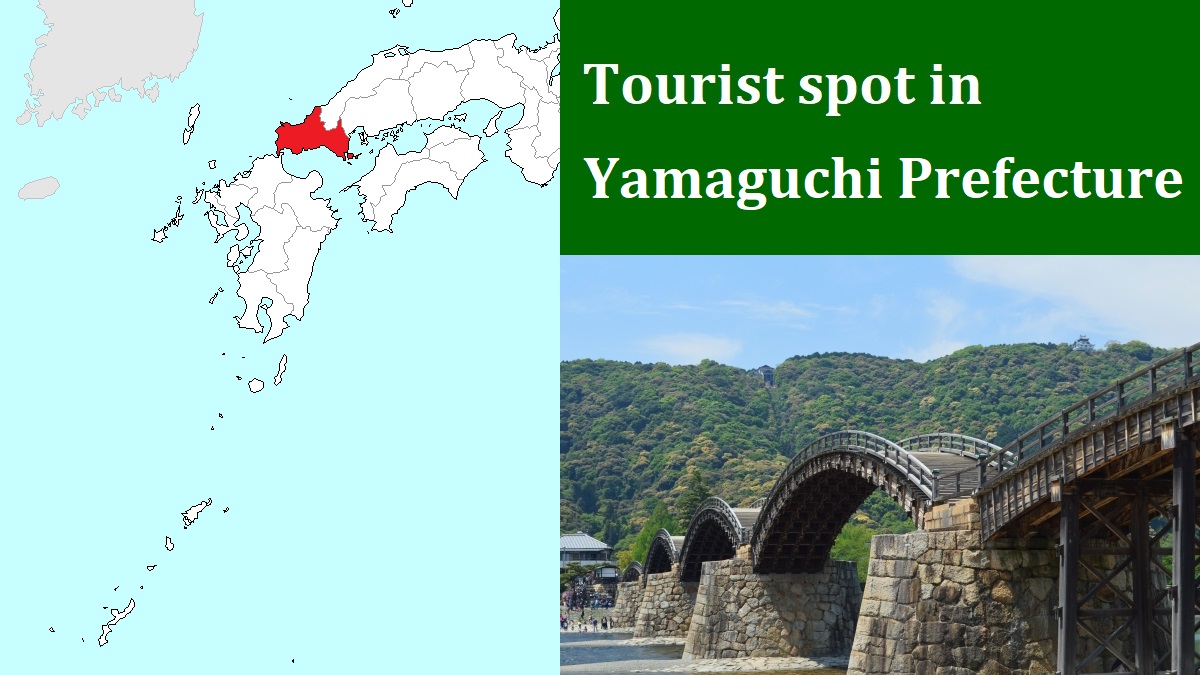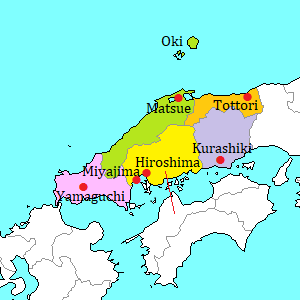Kintai Bridge [錦帯橋]
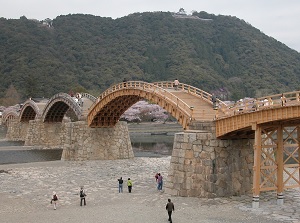
Kintai Bridge
and Iwakuni Castle on the top of mountain
Photo: Yamaguchi Prefectural Tourism Federation
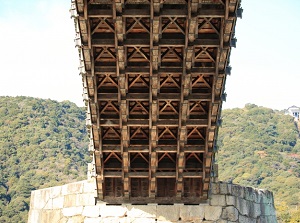
Structure of Kintai Bridge
Kintai Bridge ("Kintaikyô" in Japanese) is a wooden arch bridge in Iwakuni city (岩国) located at the east end of Yamaguchi Prefecture.
Iwakuni is located about 35 km south-southwest of Hiroshima city, and this bridge is about 5 km west of the center of the city.
This unique bridge crosses over Nishiki River flowing through Iwakuni city.
The length is 193.3 meters and the width is 5 meters.
It has five arches.
This bridge is made of woods.
Of course, nails and clamps are used.
But the main structural part of the bridge is assembled elaborately with only woods.
It is said that this structure isn't seen even in the world.
The original bridge was built to connect Iwakuni Castle and the castle town in 1673.
To construct the bridge resistant to flood, a bridge with six arches in China gave the designer the idea of structure.
After the completion, this bridge had kept the figure by repairing periodically for a long time.
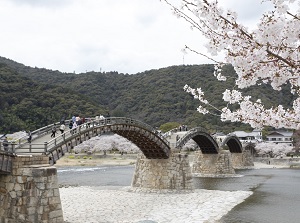
Kintai Bridge in spring
Photo: Yamaguchi Prefectural Tourism Federation
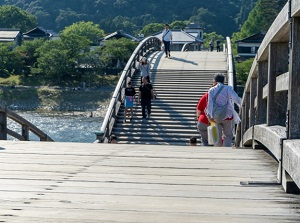
Crossing Kintai Bridge
But, it was washed away first in a massive flood by typhoon in 1950.
It is said that the reason of the washout was that the maintainance had been neglected during the World War II (1941-1945).
Then, it was restored in 1953.
Since that, each arch has been replaced about every 10 years.
Because, new carpenters for this bridge can learn the ingenious structure and its excellent technique is handed down to future.
To cross Kintai Bridge, you must buy the round-trip ticket. (300 yen)
In addition, the discount ticket including the following admission of ropeway and Iwakuni Castle is also sold.
Iwakuni Castle (岩国城)
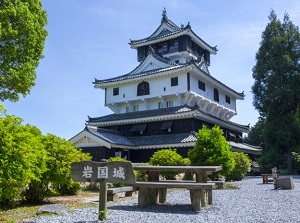
Iwakuni Castle
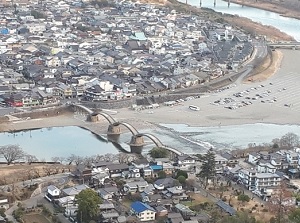
View from Iwakuni Castle
Iwakuni Castle is on the top of mountain near Kintai Bridge.
it is located at an altitude of 200 meters above sea level.
The castle was completed in 1608, but it was demolished by the order of the government in 1615.
Instead, the administrative headquarters were set up in the site, and governed iwakuni area.
In 1962, the castle tower was restored based on an old picture map.
We can visit the castle by ropeway from the foot of the mountain.
The station of the ropeway is located about 400 meters from Kintai Bridge.
Kikko Park (吉香公園)
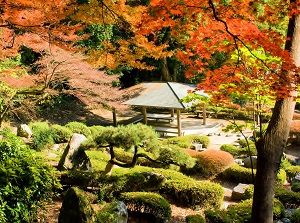
Kikko Park in autumn
Photo: Yamaguchi Prefectural Tourism Federation
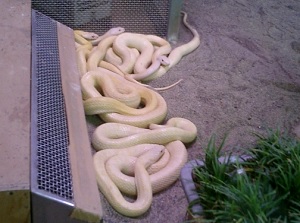
White snakes in Kikko Park
Kikko Park is a park located just northwest of Kintai Bridge and at the foot of the mountain with Iwakuni Castle.
The ropeway station is near this park.
There was the residence of Kikkawa family which was the lord of Iwakuni Clan in the 16the to 19th centuries.
The site is about 200 meters square.
In 1885, Kikko Shrine was moved to this site, and the site was changed to the park.
There are about 3,000 cherry trees in the park.
A unique facility in this park is Iwakuni White Snake Museum near the ropeway station.
White snakes live only in a few districts in Iwakuni city.
It is a Japanese ratsnake without pigment, and is the result of natural mutation.
Since old times, the people in this area have treasured the snakes as a messenger of God.
Now only hundreds of snakes live in the area, and are designated as natural treasures.
We can see them in this museum.
How to get here
By local train of JR San-yo Line, about 50 minutes from Hiroshima to Iwakuni.
Then, by route bus, about 15 to 20 minutes from Iwakuni station to Kintai Bridge.
Or, when you get off at Shin-Iwakuni station of San-yo Shinkansen, it takes about 12 minutes to Kintai Bridge by route bus.
But the trains of Shinkansen stop there only once every hour.

